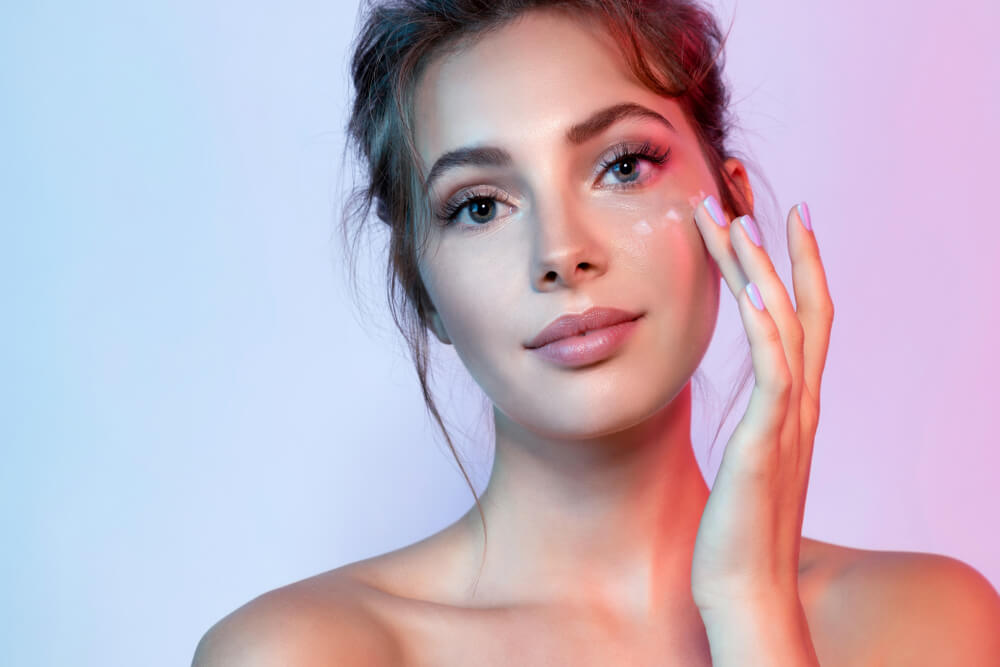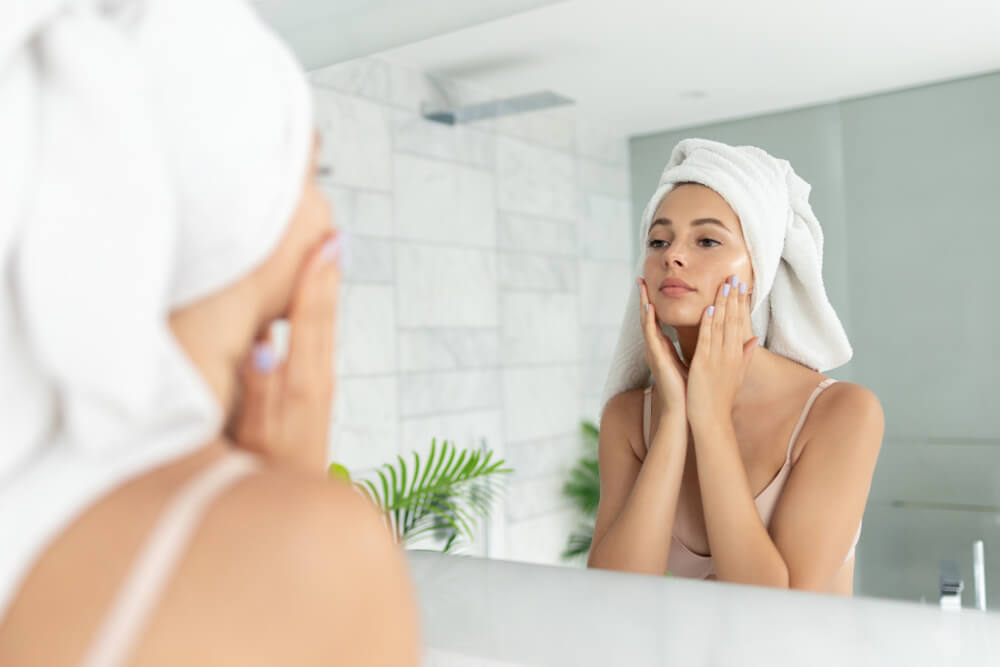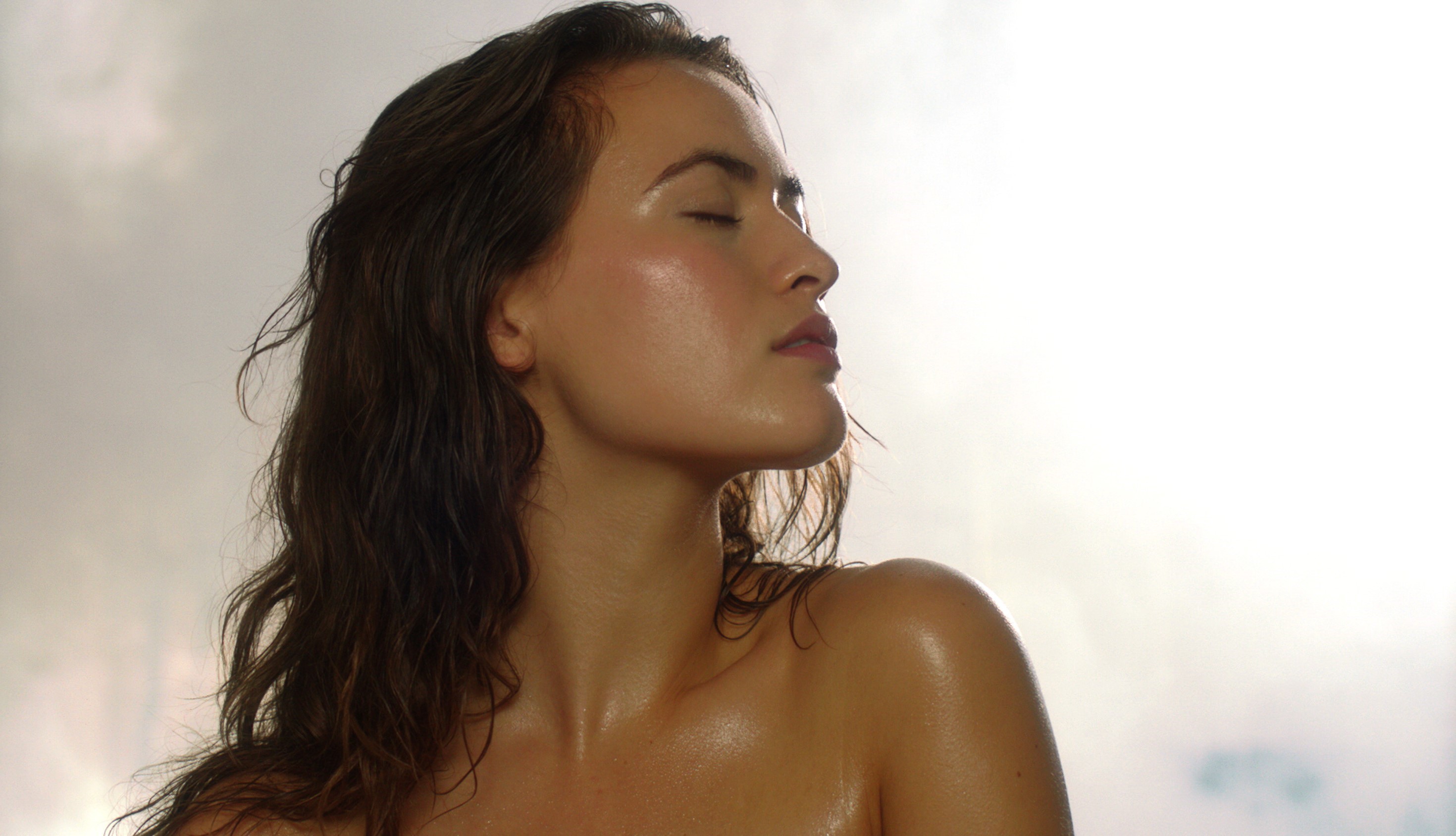Adding Steam to Your Skincare Routine
For those who love skincare, there cannot be enough treatments, elixirs, and gadgets to play with. Double cleanse? Pu-leeze. Bring on the 14-step routines. Countertops are laden with miniature skylines of exotic-looking bottles and high-tech cleansing tools.
On the other end of the pampering spectrum, you'll find people who value "less is more." Cleanser and sunscreen, and they are out the door.
Whether you are searching for a simple DIY skincare treatment that won't slow you down or want to luxuriate in a nurturing skincare ritual, the goal is the same: just add steam.
>>> Learn the 40 benefits of steam bathing
The Benefits of Facial Steaming
Steam may offer multiple benefits to the skin—our body's largest organ—including boosted hydration, dilation of pores, and increased skin permeability.
Steam may help nourish and flush skin cells. It’s logical that the heat of a steam room will increase the body’s sweat response, which helps flush bacteria and other toxins from the skin. But steam’s effects may go much further than surface cleansing. The outer epidermis tends to collect dry skin cells that act as a protective barrier against harmful irritants and pollutants. However, if this layer of protective tissue isn’t hydrated on a regular basis, it can lead to damaged and cracked skin. Research shows that steam sessions may provide the necessary moisture to keep this critical layer of skin hydrated to protect it from excessive dryness.
Steam may help increase skin circulation. The hyperthermic effect of steam sessions increases “epidural blood perfusion” in the epidermis. This carries healing nutrients to the skin microbiome, which may help strengthen the immune response.
Steam may help maintain healthy skin pH. Sessions in a steam room may help boost pH balance by supplying essential amino acids produced in the skin’s sebaceous glands. Other experts tout steam’s ability to rebalance overactive sebum glands that cause acne and other skin disorders.
Otherwise, here are some additional benefits to steaming your face.
De-Puff
A long flight, a late night, or an incident involving a whole can of Pringles—we're not judging—may leave skin looking puffy. A steam shower certainly helps with mindset but also may help reduce bloating. On his website, Dr. Andrew Weil says he recommends "sweat bathing" as a way "to cleanse the skin, soothe sore muscles, or simply relax… The sweating rids the body of excess sodium and other unwanted substances."
De-Stress
According to WebMD, stress itself can cause skin problems. The cycle goes like this: Increased stress ups the production of the hormone cortisol; cortisol ups the production of sebum, and sebum can lead to acne. Stress can also worsen conditions like eczema and rosacea.
To keep skin smooth and healthy, use stress management like regular exercise, mindfulness practices, proper sleep, and a self-care routine that includes steam showers. For even more of a sense of overall well-being, experiment with mood-enhancing ChromaTherapy and AromaTherapy.
To reap the benefits of steam on the skin, you can use facial steamers, put your face over a big bowl of hot water and use a towel as a tent, drape a towel damped by hot water over your face (don't use boiling water!), or visit a professional for a spa facial. Or, if you're lucky enough to have a steam shower at home, just step in.
What to Do Before Steaming Your Face
One of the first things you should consider before steaming is your skin type and what that means for you. For instance, should you steam your face before or after the mask?
Depending on skin type, a facial mask can be applied topically before or after a steam shower. If the skin is dry, apply a moisturizing mask, rinse off, and then take a steam shower. For oilier skin, take a steam shower, rinse and dry skin, and then apply the mask. Sheet masks and overnight masks should also be applied after a steam session.
As you start this skincare ritual, begin by hydrating overall. Drink a glass of water, and repeat this step after your steam bath, too. Wash your face with a gentle cleanser to remove any makeup, dirt, or sunscreen. If you have long hair, pull it back with an elastic band, and if you have bangs, consider wearing a soft fabric headband.

How to Steam Your Face
Steam at least 10 minutes, and up to 20 minutes, three times a week. Those with skin conditions such as rosacea or eczema should check with their dermatologist for specific steam instructions.
Here's how steam helps various skin types:
Steam for Acne-Prone Skin
According to the American Academy of Dermatology, acne is an incredibly common skin condition, affecting 40 to 50 million Americans. While often associated with teens, acne can also bother adult men and women. Women especially struggle with acne around menopause, leading to the joy of dealing with wrinkles and pimples at the same time (awesome!).
Acne is caused by clogged pores and hormonal fluctuations. That's why professional estheticians use steam during facials—the warm, moist steam dilates the pores, making extractions of clogged sebum or blackheads easier.
"Facial steaming is a great option for patients with acne-prone skin or with stubborn blackheads," board-certified dermatologist Dr. Arash Akhavan told Marie Claire. He tells the magazine that steam accomplishes several things: 1) It loosens any debris in the pores; 2) Causes sweating, which flushes out the skin; and 3) Leaves skin better able to absorb skin creams afterward.
Steam also has been shown to kill off bacteria. Essential oils can further ward off bacteria. Externally applied, tea tree and eucalyptus are antibacterial, while lavender helps reduce stress and anxiety, which may help with acne related to hormonal changes.
Steam for Dehydrated Skin
Some people confuse dehydrated skin with dry skin, but the two are actually a bit different. Dry skin is a specific skin type: the skin produces no or very little oil. Dehydrated skin, however, can happen to any skin type. Climate, the aging process, exposure to the sun, and skin care products—like topical retinoids—may all factor in.
Once the skin is dehydrated, a layer of dry, dead skin cells tends to accumulate on the surface, making product absorption from your moisturizers or serums difficult. Taking a steam bath helps address this by loosening that dry layer and making it easier to remove so that these products can do their job.
Steam for Mature Skin
As we age, our production of collagen and elastin—vital proteins that provide structure to our skin and keep it supple—starts to decline, and as they do, our skin gets thinner and less firm. We can protect our collagen by regularly using sunscreen (at least SPF 30) and by eating a healthy diet with lots of antioxidants. Exercising and steaming may also help boost the production of collagen and elastin. "Anything that increases oxygenation and blood supply to collagen will make skin healthier," Beverly Hills-based dermatologist Ronald May told Shape magazine.

What to Do After Your Facial Steaming
Using lukewarm water wash your face after steaming to remove softened oils from your skin. If you're pondering whether to exfoliate before or after steaming face, the answer is always to wait until after. This is because skin steaming loosens up a lot of buildup in your pores, and exfoliating can make removing those impurities much easier.
Drape a towel over your face and pat it dry.
This is also a great time to apply a facial mask and other skincare products, like a serum, as the steam makes the skin more permeable. Finish up with your favorite moisturizer—for oily skin, use a light, gel-based formula, and for dry skin, slather on a richer cream.
No matter your age or gender, everyone wants skin that they feel comfortable in. For more information on how steam can help give you skin that attracts compliments and boosts confidence, read "How to Achieve Glowing Skin: 7 SteamTherapy Tips."

 SEARCH
SEARCH
 FIND A DEALER
FIND A DEALER







